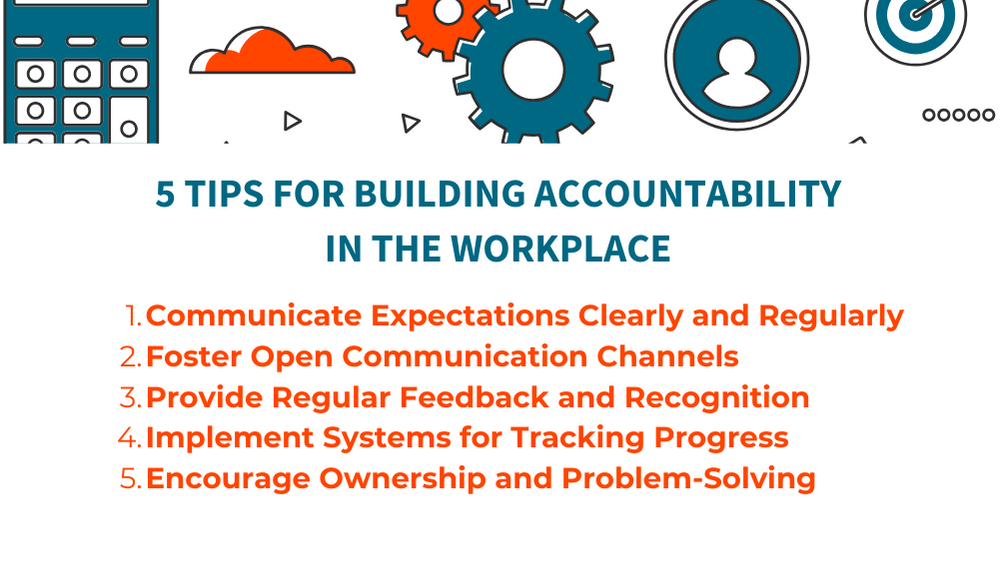In any organization, accountability serves as the cornerstone of success.
It's not just about assigning blame when things go wrong; it's about taking ownership, staying committed to goals, and driving results.
As a leader, cultivating a culture of accountability is essential to achieving long-term success and growth for your team and organization.
The Importance of Accountability in the Workplace
Accountability ensures that everyone understands their roles and responsibilities and how they play into the overall goals of the organization.
Often, in teams without accountability, chaos ensues, hindering or stopping progress toward goals.
Leadership Accountability: Setting the Tone from the Top
Leadership plays a pivotal role in cultivating accountability within the organization.
Leaders must lead by example, demonstrating accountability in their actions and decisions.
When leaders hold themselves accountable, they set a powerful precedent for their teams to follow. Additionally, as a leader, you’re responsible for setting clear expectations, providing support and resources to your team members, and establishing a culture of transparency and trust.
Identifying Accountability Issues
We can often sense a lack of accountability before we can pinpoint it.
Signs of accountability issues in a team include:
- Missed deadlines
- Blame-shifting
- Lack of ownership
- Low morale
- Low engagement within the team
Do you recognize any of these signs in your team? It's essential to address them promptly to prevent further escalation. Here are a few tips for building accountability within your team. Remember: it all starts from the top.
5 Tips for Building Accountability in the Workplace

1. Communicate Expectations Clearly and Regularly:
Does your team culture encourage questions? It should — otherwise you’ll only find out that someone doesn’t understand their assignment when it’s completed incorrectly.
Check that every team member understands their roles, responsibilities, and expectations. Regularly communicate goals, priorities, and deadlines to keep everyone aligned, leaving lots of room for questions.
2. Foster Open Communication Channels:
Encourage open dialogue and feedback within the team. Create an environment where team members feel comfortable speaking up, sharing ideas, and addressing concerns.
Hold regular (at least quarterly) conversations with each team member to determine if they are a healthy F.I.T. for their role and if they are supported with adequate tools, training, and resources (Learn more about how to hold healthy F.I.T. conversations).
3. Provide Regular Feedback and Recognition:
Offer constructive feedback and recognize achievements to motivate and engage team members. Feedback should be specific, timely, and actionable to drive improvement.
Here are a few examples:
Non-helpful recognition: “Thanks for your help!”
vs.
Helpful recognition: “Thanks for your help with gathering sources for the upcoming publication. Your contributions helped increase credibility — we’ll credit your work in the presentation. Do you enjoy this type of work? If so, I’d love to incorporate it into your role more.”
Non-helpful feedback: “Your report on industry trends felt incomplete. Could you rework it?”
vs.
Helpful feedback: “Your report on industry trends lacked projection metrics, but looked good everywhere else. Could you incorporate 4 or 5 industry projection metrics you see as significant by Tuesday so I can review them before the presentation on Thursday? Thank you!”
4. Implement Systems for Tracking Progress:
Use tools and systems to track progress on goals and projects. Regularly review progress and adjust strategies as needed to stay on track.
Might I suggest implementing a weekly sync meeting if you don’t have one in place already? A weekly sync meeting provides a built-in way to keep tabs on progress toward quarterly objectives and ongoing projects. Plus, it is a way for every team member’s voice to be heard in a group setting — an important part of building accountability.
5. Encourage Ownership and Problem-Solving:
Empower team members to take ownership of their work and find solutions to challenges independently. Encourage a proactive and collaborative approach to problem-solving and provide support and guidance as needed.
When team members take ownership of their responsibilities, they are more likely to hold themselves accountable for their actions and outcomes, driving greater success for the team and the entire organization.
Incorporating Accountability into Regular Practices
Accountability isn’t for special occasions or the occasional rainy day.
Integrating accountability into everyday practices is key to sustaining a culture of accountability.
By fostering a culture of accountability, leaders can drive performance, promote teamwork, and achieve strategic objectives. A win for the team and a win for the organization as a whole.
Need a Guide for the Journey?
Implementing accountability into everyday routines can be a challenge. If you’re looking for help with growing your business’ accountability and improving team culture, let’s talk.
I’m a leadership and business strategy coach with 30+ years of entrepreneurial experience. I’m offering free Strategy Sprint Workshops — an opportunity for your leadership team to meet with me for 60-90 minutes to discuss your biggest challenges, highlight your key opportunities, and make an actionable plan for the next 90 days.
Learn more about this no-cost opportunity to build accountability in your organization.

